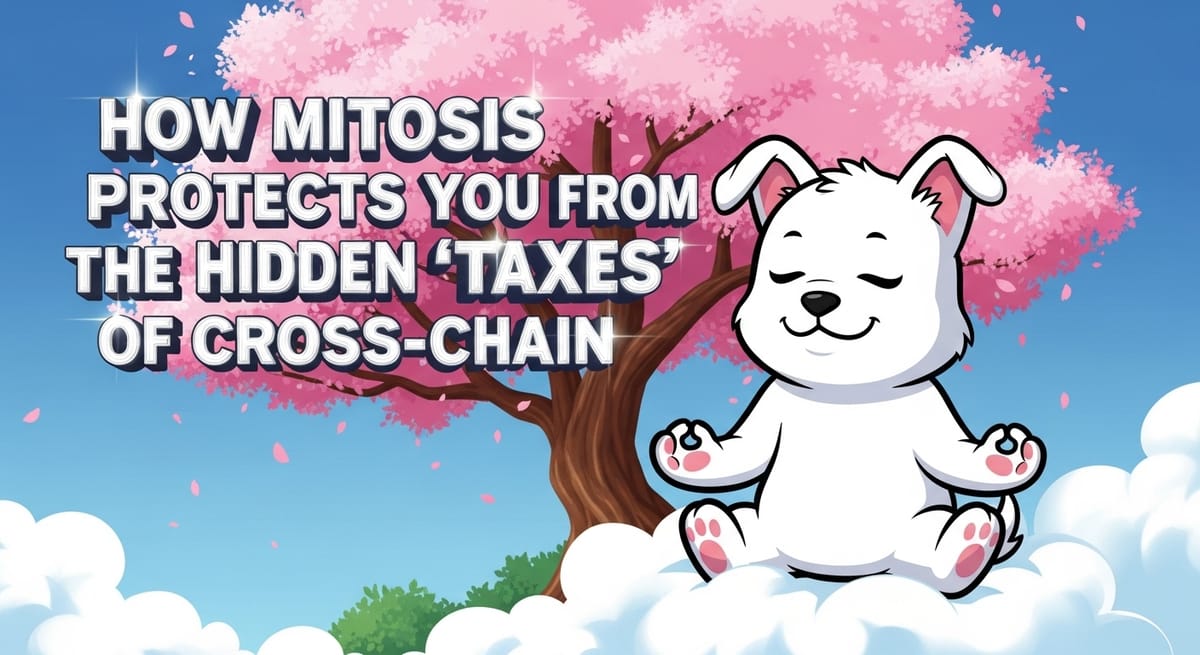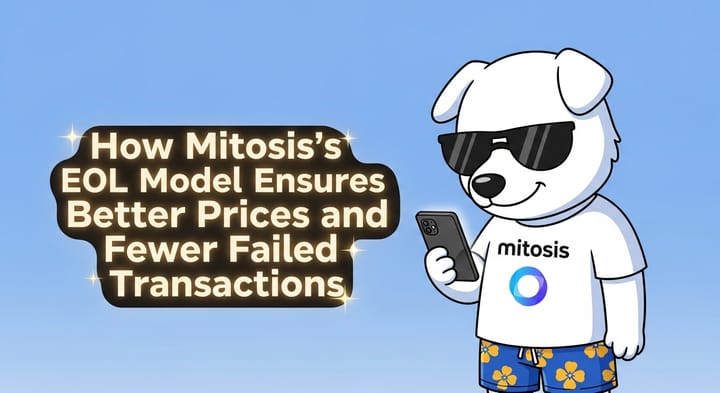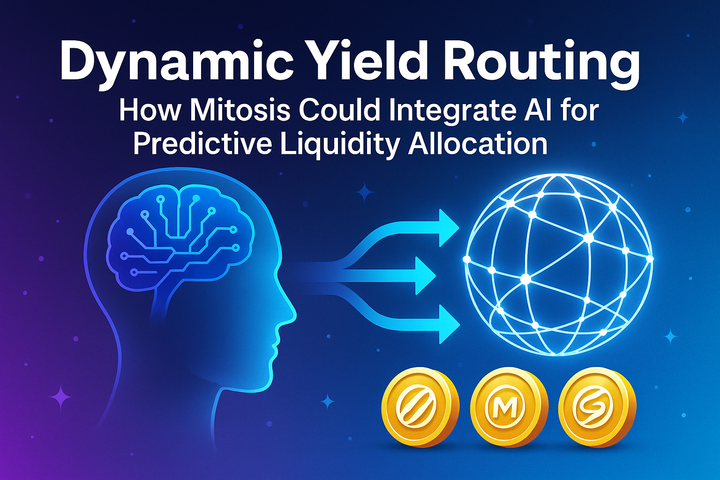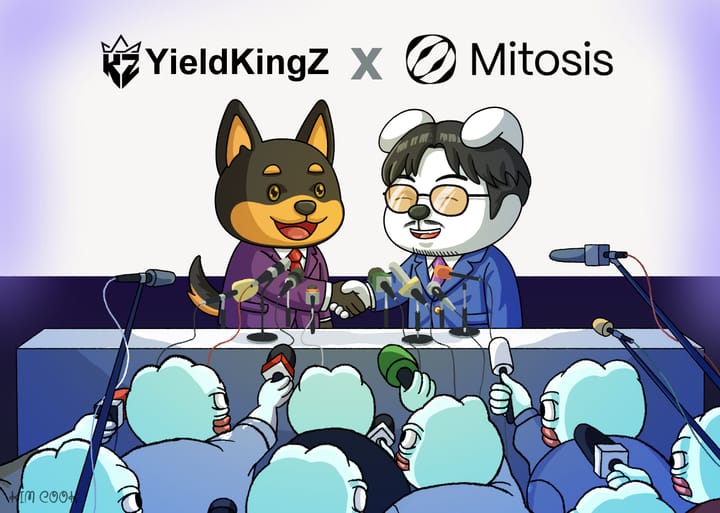Beyond Just Fees: How Mitosis Protects You from the Hidden "Taxes" of Cross-Chain

1. Introduction: The True Cost of a Cross-Chain Transfer
When we think about the cost of a cross-chain transfer, the first things that come to mind are the direct fees: the gas fee on the source chain, the bridge's own fee, and the gas fee on the destination chain. We compare these numbers, choose the cheapest option, and believe we've made a good deal.
But what if I told you that these visible fees are just the tip of the iceberg? In the complex and not-always-transparent world of DeFi, and especially in the cross-chain space, there are numerous hidden "taxes" that users pay, often without even realizing it. These invisible costs can eat up a significant portion of your profit and make even the seemingly cheapest transfers unprofitable.
What are these "hidden taxes"?
- MEV (Maximal Extractable Value): The profit that miners, validators, or bots can extract by manipulating the order of transactions.
- UX Fragmentation: The cost of your time and cognitive energy spent navigating the complex labyrinth of bridges and networks.
- Risk Premium: The implicit "fear fee" paid when using less reliable or unknown protocols.
A truly effective and user-centric cross-chain protocol must combat not only direct fees but also these hidden, much more insidious costs. Mitosis, thanks to its unique architecture, is designed with precisely this in mind.
"Tax" #1: MEV – When Your Transaction Works Against You
What is it? MEV, or Maximal Extractable Value, is essentially a "tax" you pay to smarter and faster market participants. When you send a transaction (like a cross-chain swap), it enters a public "waiting room" (the mempool). Special bots see your transaction before it's executed and can place their own trades before and after yours to extract profit from it.
- Example (Sandwich Attack):
- A bot sees you want to swap 1 ETH for USDC via a cross-chain DEX.
- It instantly buys USDC right before your trade, driving up its price.
- Your trade executes at a less favorable rate.
- The bot immediately sells its USDC, locking in a risk-free profit at your expense.
- The Result: You receive less USDC than you should have, without even noticing. The difference is your "tax" on MEV.
"Tax" #2: UX Fragmentation – The Price of Your Time and Effort
What is it? These are non-financial, but very real, costs associated with the complexity of the multichain world.
- Examples:
- Research Time: How much time do you spend searching for and comparing different bridges, reading reviews, and assessing their security?
- Cognitive Load: The need to manage multiple wallets, remember which assets are on which network, and deal with different versions of "wrapped" tokens (USDC.e, axlUSDC, etc.).
- Risk of Error: The more complex the process, the higher the chance of sending funds to the wrong address or choosing the wrong token, which can lead to a total loss of funds.
The Result: Your time and mental energy are valuable resources. A fragmented UX forces you to waste them, which is a hidden but significant cost.
"Tax" #3: The Risk Premium – Paying for Uncertainty
What is it? This is the intuitive or conscious "discount" you apply when evaluating the yield or benefit associated with using a lesser-known or potentially insecure protocol.
- Example: Protocol A offers 15% APY, but it's a new bridge with an opaque security system. Protocol B offers 12% but has a reputation for being very reliable. Many will choose Protocol B because their "risk premium" (assessment of potential losses) for Protocol A is more than 3%.
- The Result: You miss out on potential gains or are constantly stressed when using protocols you don't 100% trust. This uncertainty is also a hidden cost.
What Will You Learn From This Article?
In this article, we will explore in detail how Mitosis's architectural decisions purposefully combat each of these three "hidden taxes":
- We will analyze how the EOL model and potential routing mechanisms in Mitosis can reduce MEV.
- We will show how Mitosis, by aiming to become a unified standard, decreases the "tax" on UX.
- We will explain how the highest security standard based on AVS eliminates the "tax" on risk, giving users confidence.
We will prove that Mitosis is a protocol that cares about the total, real cost of your cross-chain operations, not just the numbers you see in the "fees" section.
2. Mitosis's Architecture: A Shield Against Hidden Costs
Understanding the nature of these hidden "taxes," we can appreciate how Mitosis's architectural decisions are purposefully designed to minimize them, providing a fairer and more efficient user experience.
1. Combating MEV: Control Over Liquidity and Routing
Mitosis has two powerful tools to counter MEV that many traditional bridges lack:
- EOL (Ecosystem-Owned Liquidity) Model:
- How it helps: A significant portion of swaps occurring within Mitosis can be executed against its own EOL liquidity rather than on public DEXs. This allows Mitosis to control the execution. Instead of sending a transaction to a public mempool where it can be "attacked" by bots, Mitosis can use internal pricing mechanisms (e.g., based on Chainlink oracles) and execute the trade within its own system. This significantly reduces opportunities for front-running and sandwich attacks.
- Potential for Protected Routing:
- How it could work: Mitosis can integrate with specialized "solver" networks or MEV-protection protocols (like Flashbots, SUAVE). When a user initiates a cross-chain swap, Mitosis can route this order not to the public mempool, but to a private system where "solvers" compete to execute it under the best conditions, with MEV either minimized or rebated back to the user.
The Result: By using EOL and smart routing, Mitosis can significantly reduce the "MEV tax," ensuring that users get a fairer rate on their cross-chain swaps.
2. Decreasing the "Tax" on UX: Striving for a Unified Standard
Mitosis combats user experience fragmentation by aiming to become a universal and easy-to-use solution.
- A Single Point of Entry: Instead of forcing users to learn dozens of bridges, Mitosis offers a single, reliable protocol for interacting with multiple networks. This saves the user's research time and reduces cognitive load.
- Solving the "Wrapped" Token Problem: The EOL model allows Mitosis to provide the canonical (official) version of an asset on the destination chain, rather than yet another unique "wrapped" token. The user doesn't need to figure out which of the five types of USDC they need – they just get USDC. This dramatically simplifies the UX and reduces the risk of errors.
- Integration with dApps and Wallets: Mitosis's partnership strategy aims to embed cross-chain functionality directly into the applications that users already use. This eliminates the need to leave a familiar environment, further reducing the "tax" on time and effort.
The Result: Mitosis saves the user's most valuable resources – time and attention – by making multichain interactions more intuitive and less stressful.
3. Eliminating the "Tax" on Risk: Security as a Top Priority
The biggest hidden "tax" is the fee for fear and uncertainty. Mitosis purposefully works to eliminate it through its multi-layered security system.
- The Highest Security Standard (AVS): As we've discussed, using EigenLayer AVS provides cryptoeconomic security equivalent to billions of dollars. This is not just a marketing claim – it's a measurable guarantee that allows users to be confident in the protocol's reliability.
- Transparency and Audits: Regular audits from leading firms and openness on security matters allow users (or the experts they trust) to independently verify the system's robustness.
- Accountable Governance (DAO): Transferring governance to the community in the long term ensures that the protocol will evolve in the interests of its users, not a narrow group.
The Result: By using Mitosis, the user pays a minimal "risk tax." They can perform cross-chain operations with confidence, knowing their funds are protected by one of the most robust mechanisms in the industry. This allows them to focus on their financial goals, not on worrying about the security of the infrastructure.
Conclusion: Mitosis – A Protocol That Values Your Resources
The true cost of a cross-chain operation is not just the fee you pay. It is the sum of all visible and invisible costs: fees, losses from MEV, and time and nerves spent.
Mitosis is a protocol designed with a deep understanding of this true cost. Its architecture is aimed not only at providing the basic function of asset movement but also at comprehensively protecting the user from the hidden "taxes" of Web3.
- It combats MEV through control over liquidity.
- It reduces the tax on UX through standardization and simplicity.
- It eliminates the tax on risk through uncompromised security.
By choosing Mitosis, you are choosing a protocol that values not only your money but also your time, attention, and peace of mind. And it is this user-centric approach that will define the leaders of the next generation of decentralized finance.
Learn more about Mitosis:
- Explore details on the official website: https://www.mitosis.org/
- Follow announcements on Twitter: https://twitter.com/MitosisOrg
- Participate in discussions on Discord: https://discord.com/invite/mitosis
- Read articles and updates on Medium: https://medium.com/mitosisorg
- Blog: https://blog.mitosis.org/



Comments ()